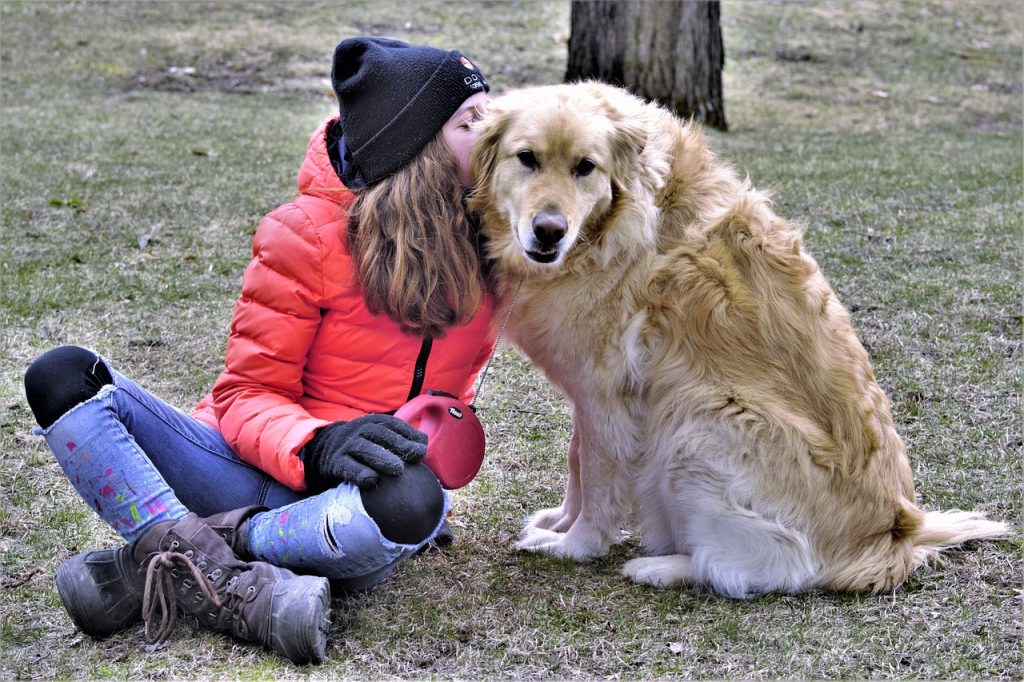
Understanding True Behavior Change (And Why It Matters)
We believe behavior modification training isn’t about teaching a few commands… it’s about helping them heal, grow, and thrive from the inside out. Behavior modification is one of our core services, and it’s truly where our relationship‑based approach shines.
“Changing a dog’s behavior isn’t just about teaching them what to do, it’s about understanding who they are, honoring the spirit that makes them unique, and guiding them to trust, confidence, and a deeper connection with the world around them.” – The Canine Nexus
What Is Behavior Modification — and Why It’s Different
Teaching a dog to “sit” or “stay” can certainly be helpful for everyday life, but obedience drills rarely address the deeper issues that can cause serious behavioral challenges. Problems like reactivity, fear, aggression, or anxiety often have emotional roots that go far beyond simple commands. Simply managing the surface behaviors may provide temporary results, but it doesn’t change what your dog is feeling or why they’re reacting the way they do. True behavior modification requires understanding of the underlying motivations, emotions, and triggers, and creating a plan that helps change your dogs perspective. It’s about guiding your dog toward emotional balance.
Instead of relying on repetition or obedience alone, we use a neuroscience-informed, relationship‑centered model. Our methodology integrates:
- Biological fulfillment — we believe your dog’s natural instincts, drives, and needs must be met in order for behavior change to “stick.”
- Clear communication & Expectations — training isn’t one-way. We help you build a shared “language” with your dog, using structured play, motivation, and consistent feedback.
- Play and Outlets: Behavior modification shouldn’t be about managing problem behaviors or living a life of management. Every dog needs healthy ways to express themselves. Dogs carry energy and natural instincts, that without proper outlets, even well-behaved dogs can develop stress, frustration, or unwanted habits.
- Owner education — because real change happens when you (the human) learn how to observe, understand, and respond to your dog’s emotional cues. thecaninenexus.com
When Behavior Modification Is Really Needed
There are behaviors that go beyond simple obedience — and that’s exactly when our behavior modification work comes in. Here are some of the issues we help tackle:
- Reactivity & aggression — when your dog lunges, barks, or freezes in high-stress situations.
- Anxiety and fear — whether it’s separation anxiety, fear of new places, or general nervousness.
- Destructive behavior — chewing, digging, or self-soothing in unhealthy ways.
- Impulse control & Chronic Escaping — problems like bolting through doors or not listening in high-stakes moments.
As your trainer, we don’t just put a band-aid on these issues. We dig in, figure out why your dog is reacting the way they are, and build a path forward that addresses those emotional needs.
Why Some Approaches Don’t Work — And What Actually Makes a Difference
Quick fixes are often marketed as long-term solutions, however, many families are left without the support they truly need. The problem isn’t dog owners, it’s approaches that overlook the emotional causes of behavior. Behavior modification should be more than suppressing responses or endlessly managing a dog’s world; it should help dogs feel safer, clearer, and more capable of making better choices in the first place.

In a world that loves fast results, it’s easy to fall into training approaches that promise immediate control: fewer outbursts, fewer struggles, fewer embarrassing moments. And yes, sometimes behaviors can be reduced quickly, but without addressing or understanding the emotions underneath and understanding contingency, the progress rarely lasts.
When emotions go unaddressed, the pressure eventually finds a way out again through new triggers, new reactions, or even shutdown and avoidance.
Lasting change doesn’t come from tighter management or more efficient obedience. It comes from helping a dog feel differently, not just behave differently.
🌿 Back to the Roots: What Dogs Actually Need
Modern living often asks dogs to exist in a world that doesn’t match their biology.
Despite thousands of years of domestication, dogs are still driven by the same instinctive needs that helped their ancestors survive. Modern life, however, often restricts them to small yards, short walks, and fragmented attention. Many behavior issues are not signs of a “bad dog,” but signs of a dog whose natural needs aren’t being met.
Going “back to the roots” means remembering what a dog is before we decide who we want them to be. When we meet the dog at a biological and emotional level, training becomes clearer, calmer, faster, and more meaningful.
🧬 Root Need #1: Biological Fulfillment
Dogs are not meant to be idle, understimulated, or isolated. They need species-appropriate outlets for their instincts, such as:
- Seeking & scenting
- Chase & grab-bite outlets
- Foraging & problem solving
- Movement & terrain
When these systems are satisfied:
- Anxiety declines instead of compounds
- Reactivity often reduces naturally
- The dog becomes more mentally balanced.
Without outlets, obedience has to fight biology. With outlets, functional obedience can flow with it.
🧬 Root Need #2: Instinctual Fulfillment & Cognitive Engagement
Play is more than “fun.” It is one of a dog’s oldest communication systems. Play is a Language, Not Just Entertainment |
Play teaches a dog to:
- Switch between high and low arousal states
- Handle frustration and delayed gratification
- Collaborate and engage meaningfully with their handler.
- Build real engagement and enthusiasm without food
- Solve problems and make thoughtful decisions.
Play is often the missing bridge between:
obedience ➜ relationship ➜ reliability
🧬 Root Need #3: Communication & Processing, Not Just Commands
Most dogs do not struggle because they lack commands — but because they lack clarity.
Dogs need predictable communication and,
- Markers for correct, incorrect, and keep-going behaviors
- Emotional Processing & Nervous‑System Balance
- Choice-Based Interactions
- Teaching Cognitive Skills, Not Just Behaviors
- Real-Life Context | Communication Beyond Commands
- Play as a Cognitive and Motivational Engine
- Balanced Drive Expression
A well-communicated dog is not just obedient — they are mentally organized.
They understand how to make good choices because they understand cause and effect.
☯️ Root Need #4: Trust, Choice & Emotional Partnership
Trust is the foundation of any lasting behavior change. Dogs thrive in relationships where they understand boundaries, predictability, and have a voice.
- Fair Leadership
- Consistency and clarity in cues and expectations. Providing clear cues and markers that the dog can reliably understand.
- Autonomy: allowing dogs to make decisions | Dogs are active participants in their own learning.
- Structured Games & Play as Communication
- Emotional Partnership & Recovery | By responding to a dog’s emotional state rather than simply enforcing obedience, we foster resilience, trust, and long-term engagement.
- Human Awareness: Handler energy, tone, and body language are integral to building trust and partnership.
Behavior change isn’t about total management or control; it’s about connection. When we honor a dog’s instincts, respect their choices, and communicate clearly, we create a partnership built on trust, confidence, and understanding. That’s when real growth happens for the dog and for the human who cares for them.

Helping Dogs Thrive, Not Just Obey
At The Canine Nexus, behavior modification goes far beyond quick fixes or simply teaching commands. We focus on understanding your dog as a complete being, honoring their instincts, emotions, and individuality. By addressing dogs at their biological and emotional roots, we create lasting change through connection, clarity, and consistent guidance
What This Means for You and Your Dog
- Dogs learn best when their natural drives are met and they have safe outlets for energy and problem-solving.
- Clear, consistent communication helps them process the world, make choices, and build confidence.
- Trust, partnership, and structured play turn training into a cooperative experience, not a power struggle.
- Emotion-Focused Change: Behavior that comes from understanding and addressing emotions is lasting, not just surface-level fixes.
- Owner coaching to support your dog’s emotional growth.
Your Role in the Partnership
Even the best strategies only work when the human is aware, consistent, and engaged. Observing, responding to, and supporting your dog’s emotional state is just as important as any cue or game.
Next Steps
At The Canine Nexus, our mission is simple: help dogs feel safe, understood, and confident while empowering owners to become true partners in their dog’s behavioral and emotional development. When dogs thrive this way, behavior improves naturally—and the bond between dog and owner grows stronger.
Take the Next Step:
- Schedule a behavior assessment to see how we can help your dog thrive.
- Learn more about our methods and approach to relationship-based training.
- Follow our blog for tips, insights, and guidance on building a happier, more confident dog.
Connect with us today and start creating a confident, well-adjusted, and joyful life with your dog.
